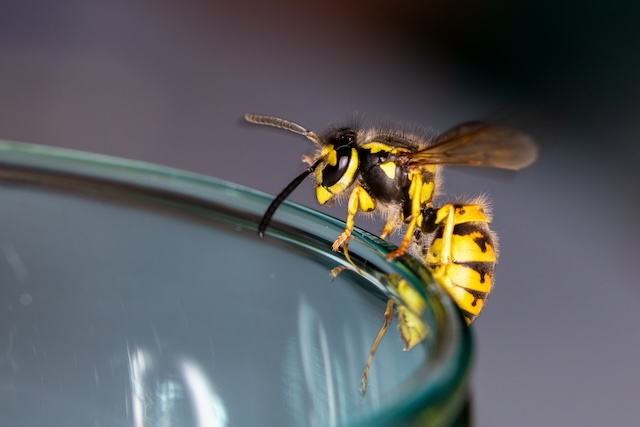Picture yourself having a picnic in your garden on a warm summer day. All of a sudden, the familiar buzzing sound of wasps makes me nervous. You’ve probably heard of wasp traps, those magical devices that claim to get rid of these buzzing pests. But do they work? Let’s learn more about wasp traps and figure out what they’re all about.
What People Are Saying About Wasp Traps: Do They Really Work?
Wasp traps are devices that are made to attract and catch wasps. They may be able to solve the age-old problem of wasps bugging your outdoor parties. How well these traps work depends on a number of things, such as the type of trap, where it is placed, and the needs of your surroundings.
Different kinds of wasp traps:
The bait in these traps, like sweet drinks, draws wasps into a container from which they can’t get out.
Pheromone traps: Pheromones are chemicals that look like the signs that wasps use to talk to each other. Wasps are drawn to these traps because they make them think there is a good place to nest nearby.
DIY Traps: Many people choose to make their own solutions, like turning soda bottles into traps or filling bowls with sweet mixtures. Do-it-yourself traps can work, but not all of them do.
Things that affect effectiveness:
Placement: Wasp traps need to be put in places where wasps are likely to be busy. The best places to put them are near food areas and the doors to your home.
Attractants: The type of bait used in the trap is very important. Wasps are drawn to sweet things, so fruit drinks, sugary water, or even meat pieces can work.
Timing: It’s important to set traps at the right time. Getting queens caught early in the season can stop them from building nests. Later in the summer, you might need to try a different method.
How to Use Wasp Traps: A Basic Guide
Choosing the Right Trap: To start, pick out a trap that works for you. It’s easy to use baited traps, but you might need to be more careful with scent traps.
It’s important to hang or place your trap where wasps are most likely to be. If your property is big, you might want to put out more than one trap.
Using Different hooks to Get Results: Try out different hooks. Wasps are drawn to sweet drinks, meat, and even fruits that are too ripe.
Regular Maintenance: Make sure to empty the trap often so it keeps working right. Wasps might not want to go into a big trap.
Safety First: Wasp traps are meant to cut down on contacts, but safety must always come first. Keep traps away from places where people meet, and let your family know where they are.
What Do You Think? Do They Work?
When it comes to getting rid of these hot pests, wasp traps can be very helpful. They are not, however, a one-size-fits-all answer. Using traps along with other safety steps, like keeping food out of reach and sealing off entry points, makes them work better.
Wasp traps can help get rid of these bothersome guests. Try out different kinds and be smart about where you put them. Most importantly, enjoy your outdoor places without wasps. With the right steps, you can make your backyard a safe place where these annoying summer guests don’t bother you.
